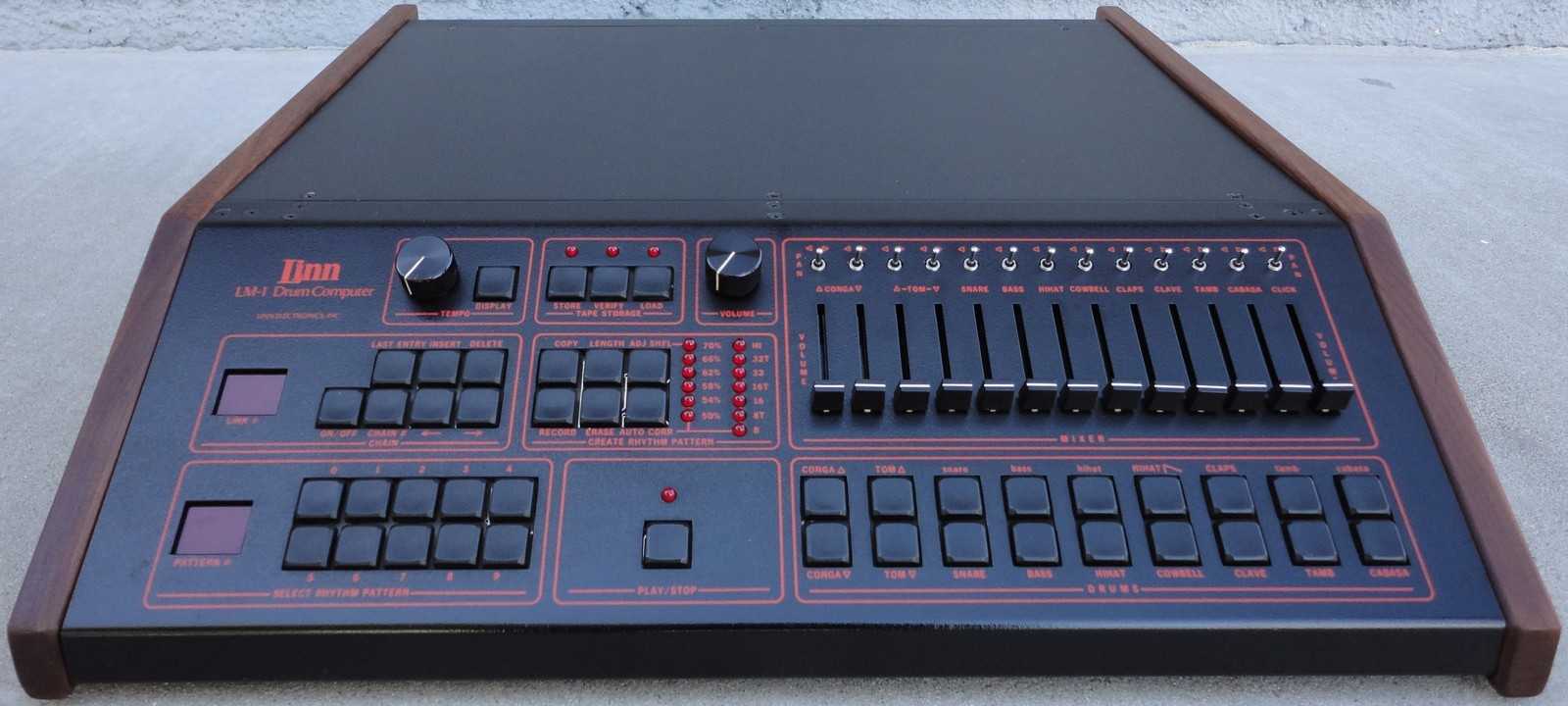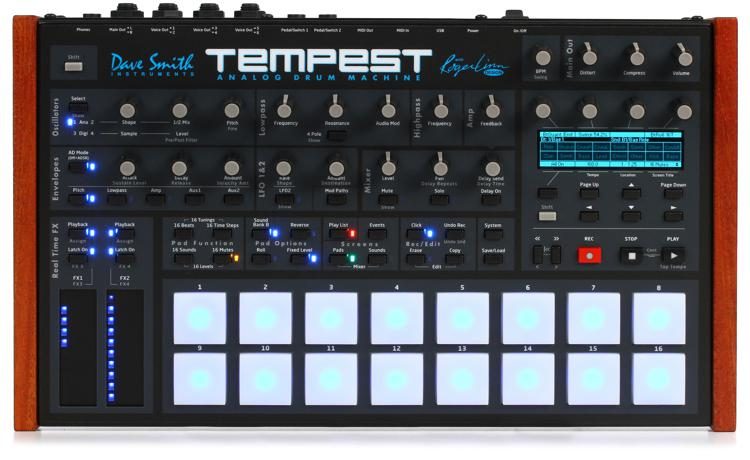
The Linn LM-1 Drum Computer is a drum machine manufactured by Linn Electronics and released in 1980. It was the first drum machine to use samples of acoustic drums, and one of the first programmable drum machines. It appears on records by artists including Human League, Gary Numan, and Prince.The LM-1, along with the Oberheim DMX, was one of the first drum machines to use samples (prerecorded sounds). It features twelve 8-bit percussion samples, which can be individually tuned: kick, snare, hi-hat, cabasa, tambourine, two toms, two congas, cowbell, claves, and hand claps.[1] The machine also introduced features such as “timing correct” (quantization) and “shuffle” (swing) and the ability to chain patterns.The LM-1 was designed by American engineer Roger Linn. In 1978, Linn, a guitarist, was dissatisfied with drum machines available at the time, such as the Roland CR-78, and wanted “a drum machine that did more than play preset samba patterns and didn’t sound like crickets”. He took a voice generator from a Roland drum machine and wrote software to create patterns.
At the suggestion of Toto keyboardist Steve Porcaro, Linn recorded samples of real drums to a computer chip. Though Linn was not the first to use digital sampling technology, by the late 70s, it had become small and affordable enough to use in his drum machine. As the samples were digital, they would not degrade like those of earlier devices, such as the Chamberlin Rhythmate, which used tape loops. Cymbal sounds were not included, due to the cost of long sound samples.
Linn said he could not recall who played the drum hits recorded as samples; possibilities include Porcaro’s brother Jeff (also of Toto) and Motown session drummer James Gadson.
Linn introduced the shuffle feature after he discovered that his code would record his playing and play it back in perfect sixteenth notes, effectively correcting his timing. To implement swing beats, he delayed the playback of alternate sixteenth notes.



